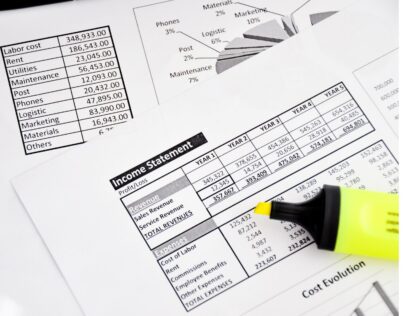Understanding the Income Tax Provision Process
The endgame of a tax provision is clear—to produce the income tax components of a company’s financial statement. However, how you get here is a bit murkier. So how does a company go about completing a tax provision and generating the necessary output for a financial statement?
While you may assume the provision process is complex and not well-defined, in reality, there are clear, delineated steps involved in completing a tax provision. The steps can be outlined quite granularly; however, here we include only those key steps that are fundamental to a provision calculation.
This discussion includes the steps involved in the computation of an annual (full-year) provision; the process for computing a quarterly provision is more streamlined for most companies and excludes several steps outlined below.
Step 1: Return-to-Provision
The first step in the provision process is the return-to-provision calculation. This serves to “true-up,” or correct, the prior-year provision balances to match the prior-year, tax return balances.
As the tax provision includes an estimate of the current year tax liability and then filed several months later, the tax return represents the finalization of this liability, the return-to-provision must be performed to properly reflect this change on a company’s financial statements.
The return-to-provision is always on a one-year lag in that within the current year’s tax provision it will include a true-up related to the difference between the prior-year tax provision and prior-year tax return.
As companies normally have their prior-year tax returns completed well in advance of their current full-year tax provision, they complete the return-to-provision quite early on—usually immediately after the filing of the prior-year tax return, or several months prior to their current year-end.
Step 2: Retrieve Necessary Input Data
Following the return-to-provision calculation, several months may lapse and then a company will reach its year-end. It is at this point when a company will get into the nitty-gritty of the tax provision with current-year data.
But before any calculations commence, the tax department must procure the necessary schedules and support from applicable other personnel in the company, including those in the accounting and finance groups.
The key schedule necessary to complete the tax provision is the trial balance.
This is a granular listing of accounts and values, representing a company’s complete financial activity for a period of time. This includes detail of all items comprising a company’s balance sheet (i.e. assets, liabilities, and shareholder’s equity) and income statement (i.e. revenue and expenses), before the impact of income taxes. In addition to this item, the tax department will also need any support for those areas that require further detail.
This may include schedules for areas such as fixed assets, intangibles, and stock compensation—just to name a few. In practice, outside of the trial balance, this detail (or changes to it) may be received at various points in the provision process, but, ideally, the tax department should receive as much as possible up-front.
Step 3: Current Provision
Now that a company’s tax department has retrieved the necessary inputs to the tax provision from the other applicable groups within the company, it may begin the core provision calculations. The first of these is the current provision.
The current provision is an estimate of tax liability that will materialize on a company’s current year tax return. It is calculated via a walk from income before income taxes, computed under accounting principles (U.S. GAAP or IFRS) and provided on the trial balance, to taxable income, computed under tax principles (Internal Revenue Code or foreign jurisdiction’s tax law).
This book-to-tax reconciliation includes both permanent and temporary M-1 adjustments.
Step 4: Deferred Provision
After completing the current provision, tax professionals jump over to the deferred provision. This is calculated based on the change in deferred tax asset (liability) during a period and is presented in a rollforward format.
The deferred tax asset (liability) quantifies tax assets and tax liabilities that will have an impact on a company’s future tax returns (either increasing or decreasing future tax amounts).
This calculation includes temporary M-1 adjustments (and not permanent M-1 adjustments) since these represent differences between accounting and tax treatment that reverse over time. In addition, net operating loss carryforwards and tax credit carryforwards result in deferred tax assets as these represent losses or tax credits that could not be utilized in the past and are being carried forward to reduce a company’s tax liability in the future.
Step 5: Total Provision
Once the current provision and deferred provision are both calculated, you simply add these two measures together to arrive at the total provision. The total provision is also referred to as the provision for income taxes (this is where the “tax provision” calculation gets its name). This item manifests itself on the face of the income statement and represents the total income tax expense (or benefit) of a company.
Step 6: Rate Reconciliation
With the total provision complete, tax professionals take this figure and divide it by pre-tax book income, or income before income taxes (which is sourced directly from the trial balance received in Step 2).
This yields the effective tax rate (ETR), which is generally considered the most important output of the tax provision. This measure is widely utilized as a benchmark, compared over different periods or versus competitors, to establish if a company is operating in a tax-efficient manner.
Companies perform an exercise known as a rate reconciliation to reconcile the federal statutory rate (21% for a U.S. corporation) with the actual effective tax rate. The rate reconciliation details the factors that move the rate up or down (items known as “rate drivers”)—which may include permanent differences, state tax expense, differences in foreign tax rates and domestic tax rates, and more.
Step 7: Financial Statements
Finally, once the rate reconciliation is complete, the output of the tax provision can be summarized within the financial statements.
The products of the tax provision manifest on the income statement (total provision), the balance sheet (deferred tax asset/liability and income tax payable/receivable), and in the supporting notes to the financial statements (rate reconciliation and additional details on total provision and deferred tax asset/liability).
Then, of course, once the financial statements are issued, it’s time to celebrate—and start preparing for the next quarter.







